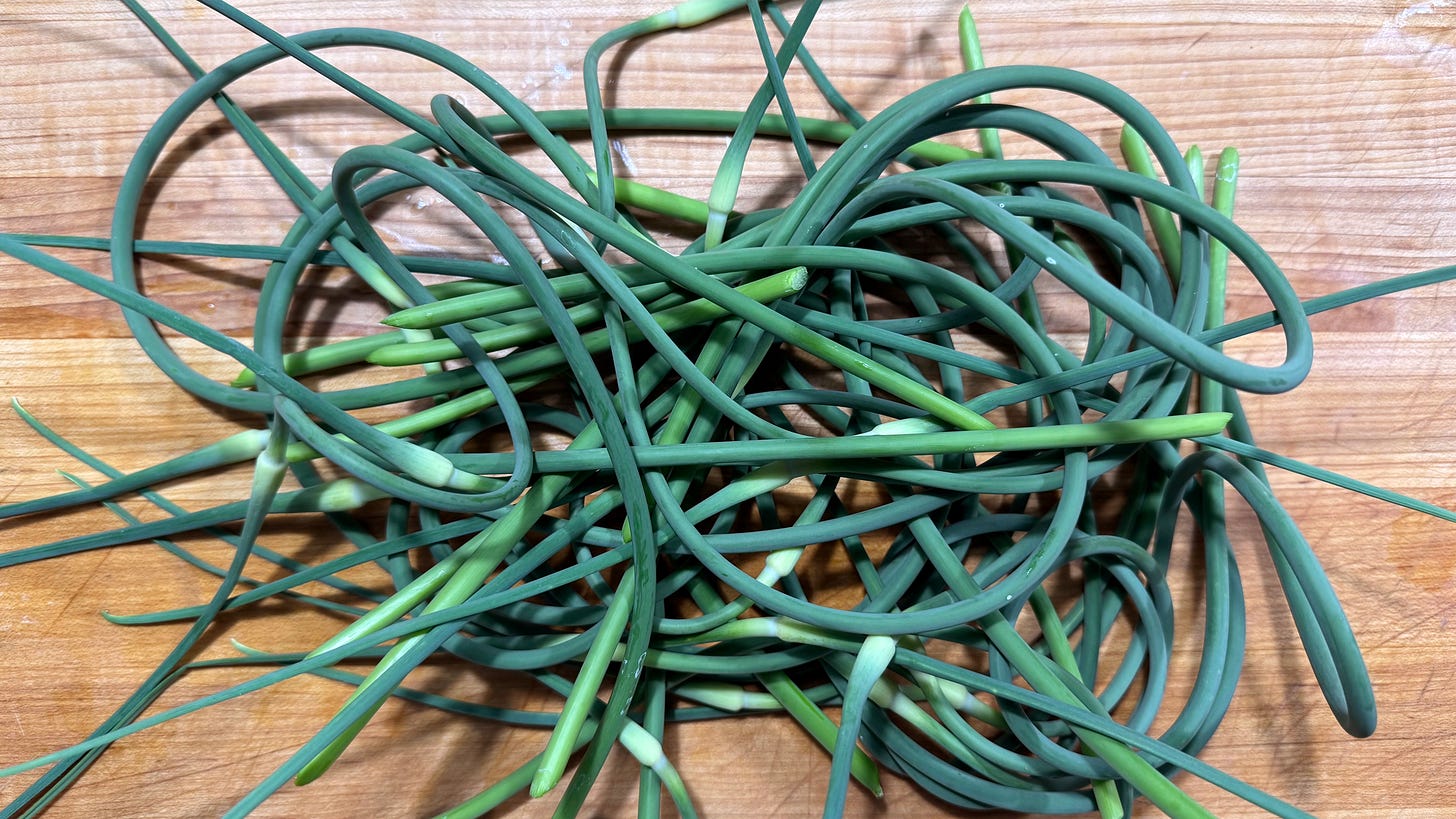This is a fun one, and super easy. When I got home from France, my garlic was in full scape mode, each plant sending up a curled flower stalk. If you cut them off, the plant puts all its energy into growing fat bulbs, and if you cut them at just the right time they’re big enough to yield a fair amount without getting too tough. There are lots of fun things you can do with them, from pesto to a simple grill or sauté (try charring them a bit and then chopping them into a potato salad) but this is a favorite.
I kept this batch pretty minimal in terms of ingredients, but you can get as baroque as you like. This version used scapes (chopped into short segments because they’re pretty fibrous), about 2 tablespoons of gochugaru, maybe a teaspoon of green coriander seeds pounded in a mortar, and a bit of freshly grated ginger. That’s it, plus 2% salt by weight, the magic number for many lacto-fermented pickles.
Most of the scapes from my garlic bed (about 36 plants I think) made one tightly packed pint jar with just enough room for the weight to fit under the lid. If you massage and knead your mixture with the salt for a few minutes, they will give off some liquid and shrink a bit, making them easier to pack (don’t pour off the liquid!)
Optional extras which I would heartily endorse include:
Grilling the scapes (or charring them in a dry pan) before chopping. If you do this, hold at least a couple in reserve or use a few other raw vegetables in your mix because cooking kills the lactic acid bacteria you need to pickle your food.
Sesame seeds make a fantastic addition to kimchi.
Other spices like cumin, mustard seeds, or fenugreek (minced lovage leaves have a similar flavor).
Fresh peas are about the same size as the chopped scapes, so they mingle together beautifully for a wonderful pickle.
Fish (or soy) sauce. It’s salty, so if you go nuts you could dial the salt back a bit, but honestly a couple of teaspoons aren’t going to make a big difference to the salinity. This is something to think about—using ferments as ingredients in other ferments. Soy sauce, gochujang, and similar potent products can add a lot of umami power to a kimchi or similar pickle. Play around!
Because the scapes are pretty pungent, this gets good fast. I left the jar out on the counter for less than a week (the kitchen was pretty cool since it was rainy out most of the time) and it’s banging. If you do make this, try mixing some into your potato salad like I recommended for raw scapes above. Next level. I have a couple other ideas for cool ways to deploy this in meals so stay tuned for those.
And of course this formula will work for pretty much anything else you’re pulling out of the garden or market these days. A featured vegetable, some flattering flavors, and 2% salt will get you there every time.






I sent everything through the blender after coarsely chopping it, then treated it like a tasty paste, i.e. held 5 days at 140F. There was significant breakdown of the fiber for sure, but these were the tough bits to begin with, and there was a lot of fiber remaining...
Ohhh-! Would love to try this next time! Thanks for the inspiration-